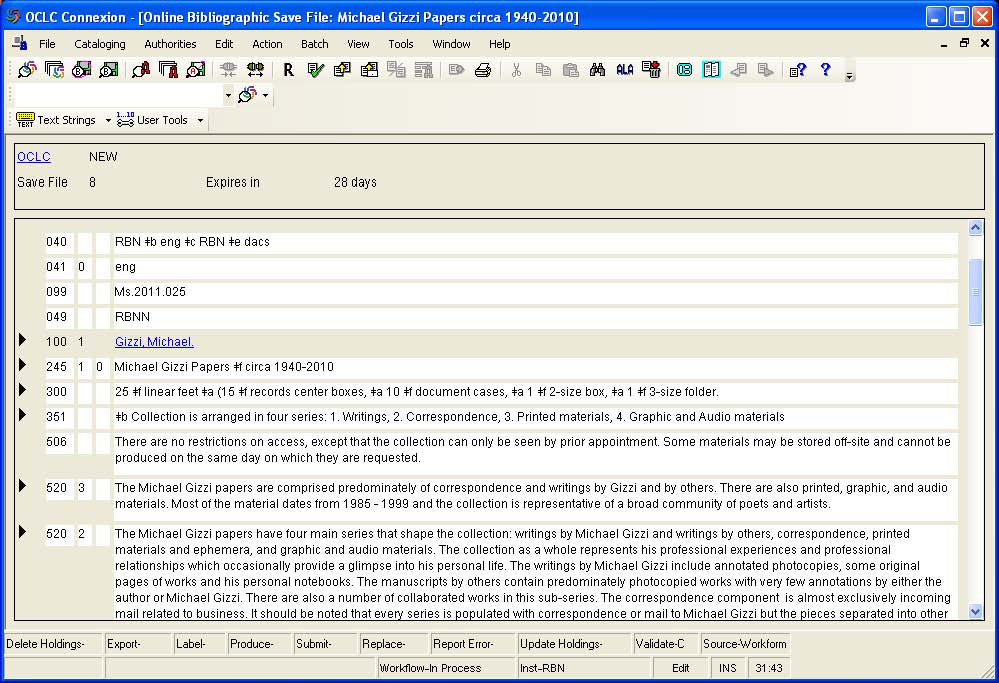Working in Archivists’ Toolkit (AT) was an exciting and challenging experience. Everything seemed final and definite once it was entered into its appropriate section. My supervisor talked me down off the ledge and helped me see this program as a sketch pad to help reach the final product. So I jumped into this part of the project head first knowing that I was so close to the final product! After the arrangement was completed I was able to transfer my physical arrangement, OR the four series, into AT to construct the foundations for the finding aid and the MARC Record fields. In each series I had to count the folders for the corresponding box to allow for some structure without going too far into series level description (remember, MPLP!).
I had done some background research to fill in the gaps on Michael Gizzi for his biographical note and used Google translator to read his diploma for his Masters degree (written in Latin in 1977). After writing this description of his life, I constructed the scope and content note which is useful for researchers to ascertain the types of materials that are in the collection. For example: in the Michael Gizzi collection there is extensive correspondence but it would be important for a researcher to know that the correspondence series is predominately incoming mail to Gizzi that typically dealt with business or editing requests. Additionally, each series has a scope and content note to further identify what specific pieces or materials can be found in each box that could be of value for researchers. From these notes I developed an abstract that will function as the hook for researchers to develop further questions to investigate with the collection.
After these two crucial notes were completed, I was able to index subject headings to increase access to the collection. I was also able to write minor notes on major players, such as Barbieo Barros (Michael Gizzi’s second wife) and Craig Watson (the person who helped open Gizzi’s publishing house). After these subject headings were checked through Library of Congress Authority Headings lists and Brown’s cataloging services through Connexion and Millennium, my supervisor walked me through creating a MARC Record.
And this, ladies and gentlemen, is the final step before integrating the finding aid and MARC record into the Brown catalog, Josiah, and ultimately to include it in the WorldCat catalog. These steps cannot happen until the boxes are sent to the Annex where they will be housed and shelved in a climate controlled environment to ensure long term preservation. This is important for a collection anticipated to receive a lot of attention and use from researchers.

